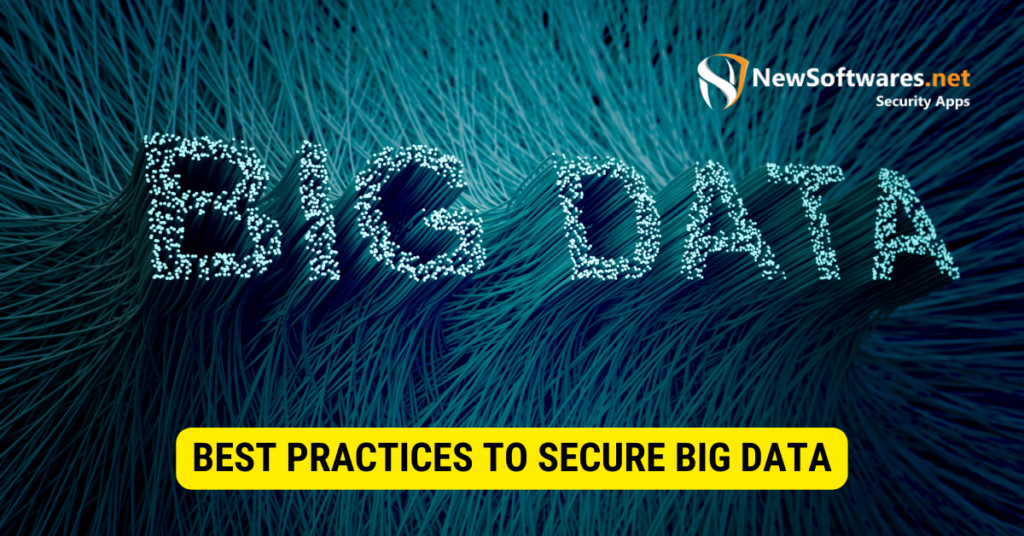In today’s fast-paced digital era, big data has emerged as a game-changer for businesses across various industries. The wealth of information collected and processed daily empowers organizations to make data-driven decisions and gain valuable insights into consumer behavior, market trends, and operational efficiency. However, with data’s increasing volume and complexity, ensuring its security has become paramount. This comprehensive guide delves into the best practices to secure big data effectively, protecting it from potential threats and cyber-attacks.
Understanding the Significance of Data Security
Before diving into the best practices, let’s first grasp the significance of data security. Big data encompasses vast amounts of structured, semi-structured, and unstructured data, often including sensitive and confidential information. Whether it’s financial records, customer details, or intellectual property, ensuring data integrity and confidentiality is paramount. A single data breach can lead to severe consequences, such as financial losses, legal liabilities, and reputational damage. Therefore, safeguarding big data should be a top priority for organizations of all sizes.
Best Practices to Secure Big Data

Adopting a Multi-Layered Security Approach
A multi-layered security approach forms the foundation of an effective data protection strategy. This involves implementing various security measures at different levels to create a robust defense against potential threats. From network security and encryption to access controls and employee training, each layer contributes to the overall protection of big data.
Encryption: Shielding Data from Prying Eyes
One of the most powerful tools in data security is encryption. By converting data into an unreadable format using cryptographic algorithms, encryption ensures that even if data falls into the wrong hands, it remains indecipherable without the proper decryption key. Implementing encryption both at rest and in transit adds a layer of protection to sensitive information.
Establishing Granular Access Controls
Controlling data access is critical to prevent unauthorized users from accessing sensitive data. Implementing granular access controls based on user roles and permissions ensures that only authorized personnel can access specific data relevant to their responsibilities.
Regular Data Backups: Preparedness for Contingencies
Data loss can occur due to hardware failures, cyber-attacks, or human errors. Regularly backing up big data is essential to ensure critical information remains accessible, even during unforeseen events.
Continuously Monitoring and Auditing Data
Continuous monitoring and auditing of big data systems allow organizations to detect potential security threats and strange activities in real time. Early detection enables prompt responses and minimizes the impact of security incidents.
Educating and Training Employees

Human error is a common cause of data breaches. Educating and training employees about data security best practices, recognizing phishing attempts, and using strong passwords can significantly reduce the risk of data compromise.
Incident Response and Disaster Recovery Plan
A well-defined incident response and disaster recovery plan is crucial for effective crisis management. This ensures that the organization can respond swiftly to security incidents, minimize damage, and restore operations promptly.
Leveraging AI and Machine Learning

Artificial intelligence (AI) and machine learning (ML) technologies offer advanced threat detection capabilities. These technologies can analyze data patterns, detect anomalies, and predict potential security breaches, enabling proactive measures.
Staying Informed about Emerging Threats
The cyber threat landscape is constantly evolving. Staying informed about the latest threats and security trends is essential in adapting data security measures to emerging risks.
FAQs
Why is data security important for businesses dealing with big data?
Data security is crucial as big data often contains sensitive information, and breaches can lead to significant financial losses and reputational damage.
How does encryption protect data from unauthorized access?
Encryption converts data into an unreadable format using cryptographic algorithms, ensuring that only authorized users with the decryption key can access it.
What are the benefits of a multi-layered security approach?
A multi-layered security approach provides comprehensive protection by implementing various security measures at different levels, making it difficult for attackers to breach the system.
How often should organizations conduct data backups?
Organizations should perform regular data backups to minimize the risk of data loss due to system failures or cyber incidents.
How can AI and ML technologies improve data security?
AI and ML technologies can analyze data patterns, detect anomalies, and predict potential security breaches, enabling proactive responses and threat prevention.
Conclusion
Securing big data is a continuous journey that requires a proactive and vigilant approach. By following these best practices, organizations can fortify their data security measures and protect their valuable assets from potential threats. Emphasizing data security safeguards the organization’s reputation and instills trust among customers and stakeholders. As a leading expert in data security, we are committed to helping businesses thrive in today’s digital age by ensuring the safety and confidentiality of their big data.
